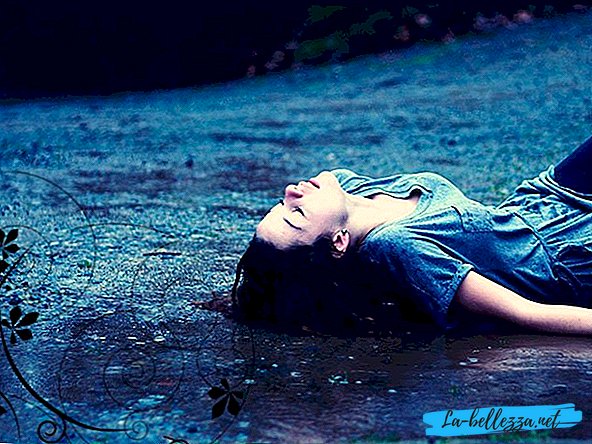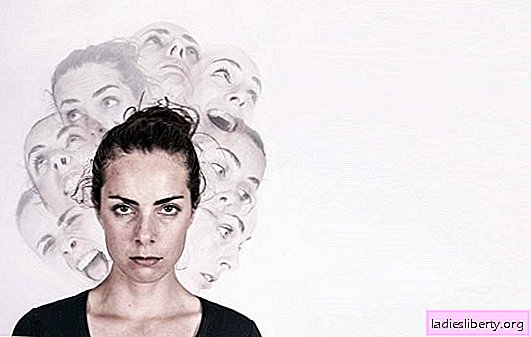
Pneumonia (pneumonia) - one of the most severe lung lesions. This disease carries an immediate danger to human life, has a tendency to a chronic course.
In general, pneumonia is not as widespread as bronchitis. According to statistics, only in 15% of cases, patients are diagnosed with pneumonia. However, when it comes to young patients, statistics sharply tilt: in 75-80% of cases, pneumonia is detected.
The greatest danger lies in the nature of the process in children: the clinic is much more pronounced, mortality is also higher at times.
All this speaks of how important it is to identify the disease at its initial stage.
What is needed about the causes and signs of pneumonia in children?
Signs of pneumonia in children: causes
In the structure of the whole complex of causes, we can distinguish common sources (those that affect patients of all ages) and those that directly affect younger patients.
Among common sources:
• Subcooling. Low temperatures affect the body negatively: there is a weakening of the body's defenses. This can result in a commonplace cold, and can manifest itself in lung damage. It all depends on the causative agent of the infectious lesion and the general health of the child.
• Vitamins. Reduce the effectiveness of the immune system.
• Improper treatment of SARS. Leads to the spread of infection to the respiratory tract.
The causes of the disease in children are also many:
• Maternal infections. If the mother has a chronic focus of infection, bacterial agents, viruses can be transmitted to the fetus. The placental barrier - protection is reliable, but not perfect. In this case, infection occurs even in the prenatal period. A situation may arise in which infection occurs during the passage of the child through the birth canal. Most often, such pathogens are the herpes virus, Klebsiella, fungi.
• The presence of congenital malformations. Considered an increased risk factor.
Signs of pneumonia in children: characteristic symptoms
Signs of pneumonia in children vary significantly depending on the age of the patient. It is especially difficult to diagnose pneumonia in children under one year of age, since it is only necessary to draw conclusions based on data from objective studies.
The leading sign of pneumonia in children under one year of age is a moderate rise in body temperature. The values of the thermometer remain in the range up to 37.5. In some cases, there may not be a rise in temperature at all. Therefore, it is impossible to draw conclusions about the nature and severity of the disease only on the basis of a thermometer.
At the initial stage of the disease, the child becomes restless or, conversely, lethargic. Stool disorders, frequent regurgitation, paroxysmal cough may develop. The most reliable manifestations by which the disease can be recognized are respiratory disorders of varying severity:
• Shortness of breath, choking. You can recognize them by increasing the number of respiratory movements per minute. In children under 2 months of age, the number of breaths in excess of 60 is considered a pathological deviation, in patients older than 2 months - in excess of 50.
• Sputum discharge. Sputum with pneumonia can be transparent, but yellow or yellowish-green discharge is more often observed. This indicates the purulent nature of the process.
• Change in skin relief when breathing. When making respiratory movements, the skin from the affected lung is retracted.
• Change in the depth of breath.
• Blue nasolabial triangle. If there is a lack of oxygen, the nasolabial triangle turns pale bluish.
In the aggregate (all or part), these signs of pneumonia in children reliably enough allow for an initial diagnosis. However, it is impossible to make a diagnosis on your own. If at least one manifestation is found, you should immediately contact a pediatrician.
In patients older than a year, pneumonia is easier to recognize: the symptoms are not so blurred and the clinical picture is clearer.
Main symptom - A strong paroxysmal cough, usually with sputum. A cough is accompanied by shortness of breath or suffocation. Identify shortness of breath by determining the number of breaths per minute.
The quantitative norm decreases as they grow older:
• At the age of 1-3 years, pathology is considered 30 or more breaths per minute.
• At the age of 4-6 years, the norm is up to 25 breaths.
A characteristic sign of pneumonia in older children is the abrupt development of the disease. On day 3-5, the condition can spontaneously improve: body temperature normalizes, cough weakens. Then the patient's condition worsens sharply.
Throughout the course of the disease, body temperature may remain low, even within normal limits. Significantly more important from a diagnostic point of view remain other manifestations of a probable disease.
Pneumonia is accompanied by typical manifestations of general intoxication of the body: headache, weakness, weakness, drowsiness. Their severity varies from patient to patient. Pallor of the skin and characteristic sounds during breathing are noted (also not always).
Also, parents should be alerted by the lack of therapeutic effect of antipyretic drugs.
As you can see, these signs of pneumonia in children do not allow to make a diagnosis with absolute accuracy. We can talk about laryngitis, bronchitis. Only x-rays can clarify the situation.
Diagnosis of pneumonia in children
Diagnostic measures for pneumonia are not very difficult. The first thing parents need to do is contact a local GP. The doctor will conduct an initial examination of the patient and ask the questions necessary to clarify the condition of the child. X-ray examination is considered the gold standard in the diagnosis of pneumonia in children. Provided that the pictures are correctly conducted and correctly described, the diagnosis is not difficult. To confirm, a clinical blood test is prescribed. With pneumonia in the blood, a picture of a typical inflammatory process with leukocytosis, an increase in the level of ESR, etc. is observed.
It is impossible to independently diagnose pneumonia. In addition, any delay, especially when it comes to babies, is fraught with the development of serious complications, even death. Therefore, even with suspicions of a health problem, your child should not neglect going to the doctor. Vigilance is one of the pillars on which health is based.
Treatment of pneumonia in children
There are no fundamental differences from the treatment of adult patients. However, parents should know in which cases treatment at home can be carried out, and in which hospitalization in a hospital is recommended.
Indications for hospitalization are very clearly defined:
• The development of pneumonia complications: respiratory failure, heart failure, etc.
• General serious condition of the patient.
• The presence of chronic diseases in the child.
• Unfavorable living conditions in which the patient is.
• Age to a year. In other cases, the issue is decided individually, at the discretion of the treating specialist.
None of the drugs recommended for the treatment of pneumonia can be used without clear indications and purposes.
The following groups of drugs are prescribed for treatment:
• Antipyretic.
• Antibacterial drugs (prescribed in extreme cases).
• Anti-inflammatory.
• Expectorant.
Names are selected by the doctor. The lack of medicines in the shelves of domestic pharmacies do not experience. The doctor prescribes the most optimal and safe options.
It is impossible to independently determine what the child is sick with. Similar signs are pneumonia, and bronchitis, and SARS. One must be aware that pneumonia is by no means harmless. Running pneumonia is deadly and even in the case of adequate therapy is fraught with the development of many complications: a decrease in lung capacity, a transition to a chronic form with frequent relapses, etc. In order to protect your child from health problems in the future, you should carefully monitor his condition and, at the first changes in physiological manifestations, behavior, immediately contact a pediatrician.











